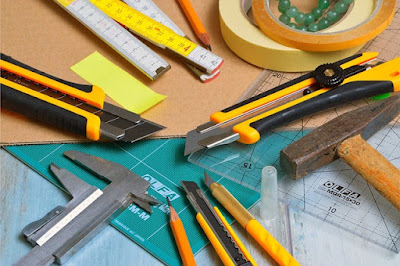Set Up a Budget-Friendly Woodworking Shop in a Small Space
Your Dream Workshop for Under $1,000? (Here’s How)
Think you need a giant garage and a fortune in tools to start woodworking? Think again. The truth is, with a strategic plan, you can build a highly functional and organized workshop in a small space (even a 10' x 6' corner) for less than $1,000.
This isn't just theory. Hundreds of hobbyists have done it by ditching the guesswork and following step-by-step guides that prioritize budget-smart tools and space-maximizing layouts. If you're ready to finally build furniture, restore antiques, or create handmade gifts, your starting point is right here.
The Hidden Advantage of a Small Workshop
A compact space isn't a limitation—it's an advantage. It forces you to be organized, efficient, and intentional with every tool you buy. This means:
- Zero wasted money on gadgets that gather dust.
- Zero time lost searching for misplaced tools.
- A more focused, productive environment free from clutter.
Many seasoned woodworkers admit their small-space shops produce better results because they work smarter, not bigger.
The Blueprint to Your Sub-$1,000 Shop
Here’s how to transform your spare room, basement, or shed into a powerhouse workshop without breaking the bank.
1. Claim Your Space (The Right Way)
You don't need a cathedral. You need a dedicated spot with:
- Bright Lighting: LED shop lights are a cheap game-changer.
- Good Ventilation: Essential for dust control and safety.
- Power Access: Plan your layout around outlets.
Pro Tip: Don't forget soundproofing! Basic acoustic panels let you work at any hour without disturbing the household. The Ultimate Small Shop Guide covers this and other often-overlooked setup secrets.
2. Invest in Tools That Earn Their Keep
Forget buying every tool you see. Focus on the versatile essentials that handle 90% of projects:
- Circular Saw
- Power Drill/Driver
- Jigsaw
- Clamps (you can never have enough!)
- Measuring Tape & Combination Square
Quality over quantity. A cheap tool can ruin a project and cost you more in the long run. This is why proven guides offer vetted tool recommendations—so you buy once, cry once.
3. Master Your Layout & Storage
This is where the magic happens. Use wall-mounted French cleats, fold-down workbenches, and mobile tool carts. A smart layout lets you pivot from cutting to assembly without missing a beat.
4. Unleash Budget-Friendly Hacks
Stay under budget by:
- Sourcing quality second-hand tools (Facebook Marketplace, Craigslist).
- Building your own storage from scrap plywood.
- Following a plan that tells you exactly what to buy, preventing costly wasted lumber and misguided purchases.
Stop Dreaming, Start Building (Your Shop & Your Projects)
You could spend months researching, trialing, and erroring—or you can have a proven blueprint from day one.
The Ultimate Small Shop Guide is the shortcut you need. This isn't just an ebook; it's a 240-page illustrated A-Z system used by over 45,000 woodworkers to:
- Build their dream workshop for under $1,000.
- Avoid the 5 most common & costly beginner mistakes.
- Select long-lasting tools that professionals trust.
Click Here to See The Ultimate Small Shop Guide & Get Your Copy Now (Risk-Free)
Final Thought: Your Workshop Awaits
A professional-grade workshop isn’t about square footage. It’s about smart planning, the right fundamentals, and the courage to start. Your space, no matter how small, is capable of incredible things.
Get the plan, grab your tools, and let's build something.
This post may contain affiliate links, meaning we get a commission if you decide to make a purchase through our links, at no cost to you. We only recommend products we genuinely believe in







.jpeg)

.jpeg)
